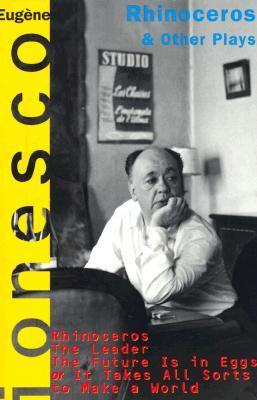TL;DR
Eugène Ionesco's 'Rhinoceros' dramatizes the absurdity of conformity and the struggle for individual identity amidst societal pressure, as townspeople transform into rhinoceroses, leaving one man to resist the tide of mindlessness.
What is Rhinoceros and Other Plays about
In 'Rhinoceros and Other Plays,' Eugène Ionesco presents a surreal exploration of human existence, encapsulating themes of conformity, identity, and existential struggle. The play unfolds in a small town that is disrupted by the sudden appearance of rhinoceroses, which symbolize the dangerous allure of conformity and the loss of individuality. As more townspeople succumb to the transformation, one man, Bérenger, stands alone against the tide, illustrating the tension between societal pressure and personal integrity. Written in the late 1950s, the play reflects the anxieties of the post-war era and challenges audiences to confront the absurdity of the human condition.
Rhinoceros and Other Plays 6 Key Takeaways
The Arrival of the Rhinoceros
The play opens with a tranquil town disrupted by the sudden sighting of a rhinoceros, which shocks the townspeople and sets the stage for existential conflict.
The Transformation Begins
As more people begin to transform into rhinoceroses, the community becomes increasingly chaotic, highlighting the absurdity of conformity and societal pressures.
Bérenger's Isolation
Bérenger, the protagonist, struggles to maintain his humanity as he witnesses his friends and loved ones succumb to the allure of becoming rhinoceroses.
Mrs. Boeuf's Devotion
Mrs. Boeuf recognizes her husband transformed into a rhinoceros and chooses to remain with him, illustrating the themes of loyalty and the acceptance of absurdity.
Bérenger's Defiance
In the climax, Bérenger grapples with despair but ultimately proclaims his refusal to capitulate, affirming his commitment to individuality amidst despair.
The Final Stand
With all others turned into rhinoceroses, Bérenger stands alone, facing the absurdity of his situation, embodying the struggle between human integrity and societal norms.
Top Rhinoceros and Other Plays Quotes
- I'm the last man left, and I'm staying that way until the end. I'm not capitulating!
- The rhinoceroses symbolize blind conformity, a reminder of the fragility of human identity in the face of societal pressure.
- To be human is to struggle against the absurdity of existence and to fight for one's individuality.
Who should read Rhinoceros and Other Plays?
This play is ideal for readers interested in existential philosophy and the absurdism movement. It offers profound insights into the nature of conformity and individuality, encouraging reflection on personal identity amid societal pressures.
Rhinoceros and Other Plays Best Reviews
- The New York Times lauds 'Rhinoceros' as a 'brilliantly absurd commentary on the dangers of conformity,' praising Ionesco's sharp wit and compelling narrative.
- The Guardian applauds Ionesco's ability to blend laughter with existential dread, stating that 'Rhinoceros' challenges audiences to examine their own choices in a world teetering on the edge of absurdity.
People also liked these summaries
Rhinoceros and Other Plays FAQs
What is the main theme of Rhinoceros?
The main theme of 'Rhinoceros' is the struggle between conformity and individuality, exploring how societal pressures can lead to the loss of one's identity.
What does Bérenger represent in the play?
Bérenger represents the individual's fight for identity and integrity in a world where conformity is celebrated, embodying the existential struggle for meaning.
